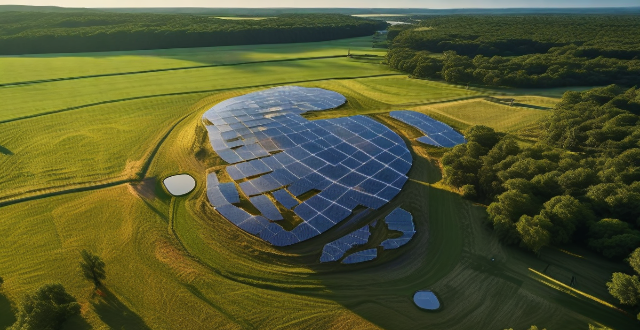Renewable energy technologies are crucial for reducing carbon emissions and combating climate change. They harness natural resources such as wind, solar, hydro, geothermal, and biomass to produce electricity or heat without emitting greenhouse gases. This article discusses the most promising renewable energy technologies for reducing carbon emissions. Solar energy can be generated through photovoltaics (PV) or concentrated solar power (CSP). Wind energy is growing rapidly due to its low cost and minimal environmental impact. Hydropower is a significant source of clean power but has environmental concerns. Geothermal energy has a high capacity factor but limited availability. Bioenergy helps reduce dependence on fossil fuels but requires careful consideration of land use changes. Wave and tidal energy have immense potential but are still in early development stages. Overall, these technologies offer unique benefits and challenges for creating a sustainable future.

Introduction
Renewable energy technologies have become increasingly important in the fight against climate change and reducing carbon emissions. These technologies harness natural resources such as wind, solar, hydro, geothermal, and biomass to generate electricity or heat without producing greenhouse gases. In this article, we will discuss the most promising renewable energy technologies for reducing carbon emissions.
Solar Energy
Photovoltaics (PV)
Photovoltaic cells convert sunlight directly into electricity. They are made of semiconductor materials that absorb photons from sunlight and release electrons, generating an electric current. PV systems can be installed on rooftops, in large solar farms, or even integrated into building materials like windows and walls. The cost of PV technology has significantly decreased over the past decade, making it more accessible to consumers and businesses alike.
Concentrated Solar Power (CSP)
Concentrated solar power uses mirrors or lenses to focus sunlight onto a small area, which generates heat that is then used to produce steam and drive turbines to generate electricity. CSP plants require a lot of land but can store thermal energy, allowing them to generate power even after sunset. This technology is best suited for hot, dry regions with high levels of direct sunlight.
Wind Energy
Wind turbines convert the kinetic energy of wind into electricity by using rotating blades to drive a generator. Wind power is one of the fastest-growing sources of renewable energy due to its relatively low cost and minimal environmental impact. Offshore wind farms have also gained popularity as they can take advantage of stronger and more consistent winds found at sea.
Hydropower
Hydropower is generated by harnessing the energy of flowing water, usually through the use of dams and turbines. It is one of the oldest forms of renewable energy and remains a significant source of clean power worldwide. However, constructing large dams can have negative environmental and social impacts, leading to increased interest in smaller-scale run-of-river projects that do not require dams.
Geothermal Energy
Geothermal energy is derived from the Earth's internal heat, which is accessed by drilling wells into hot underground reservoirs. This resource can be used to generate electricity through steam turbines or provide heating and cooling for buildings through district heating systems. Geothermal energy has a very high capacity factor, meaning it can provide consistent power throughout the year. However, its availability is limited to certain geographic locations with suitable underground conditions.
Bioenergy
Bioenergy involves using organic matter, such as wood chips, agricultural waste, or dedicated energy crops, to produce heat or electricity. Biomass can be burned directly or converted into biofuels like ethanol or biodiesel. While bioenergy can help reduce dependence on fossil fuels, concerns about land use changes and competition with food production must be carefully considered.
Wave and Tidal Energy
Wave and tidal energy technologies harness the power of ocean waves and tides to generate electricity. These systems typically involve underwater turbines that rotate as waves pass over them or as tides move in and out. Although still in the early stages of development compared to other renewable sources, wave and tidal energy have immense potential due to the vast amount of energy available in our oceans.
Conclusion
In conclusion, there are several promising renewable energy technologies available today that can help reduce carbon emissions and mitigate climate change. Solar energy, wind energy, hydropower, geothermal energy, bioenergy, and wave/tidal energy all offer unique benefits and challenges. By continuing to invest in research and development, improving efficiency, and expanding infrastructure, these technologies will play a crucial role in creating a sustainable future for generations to come.